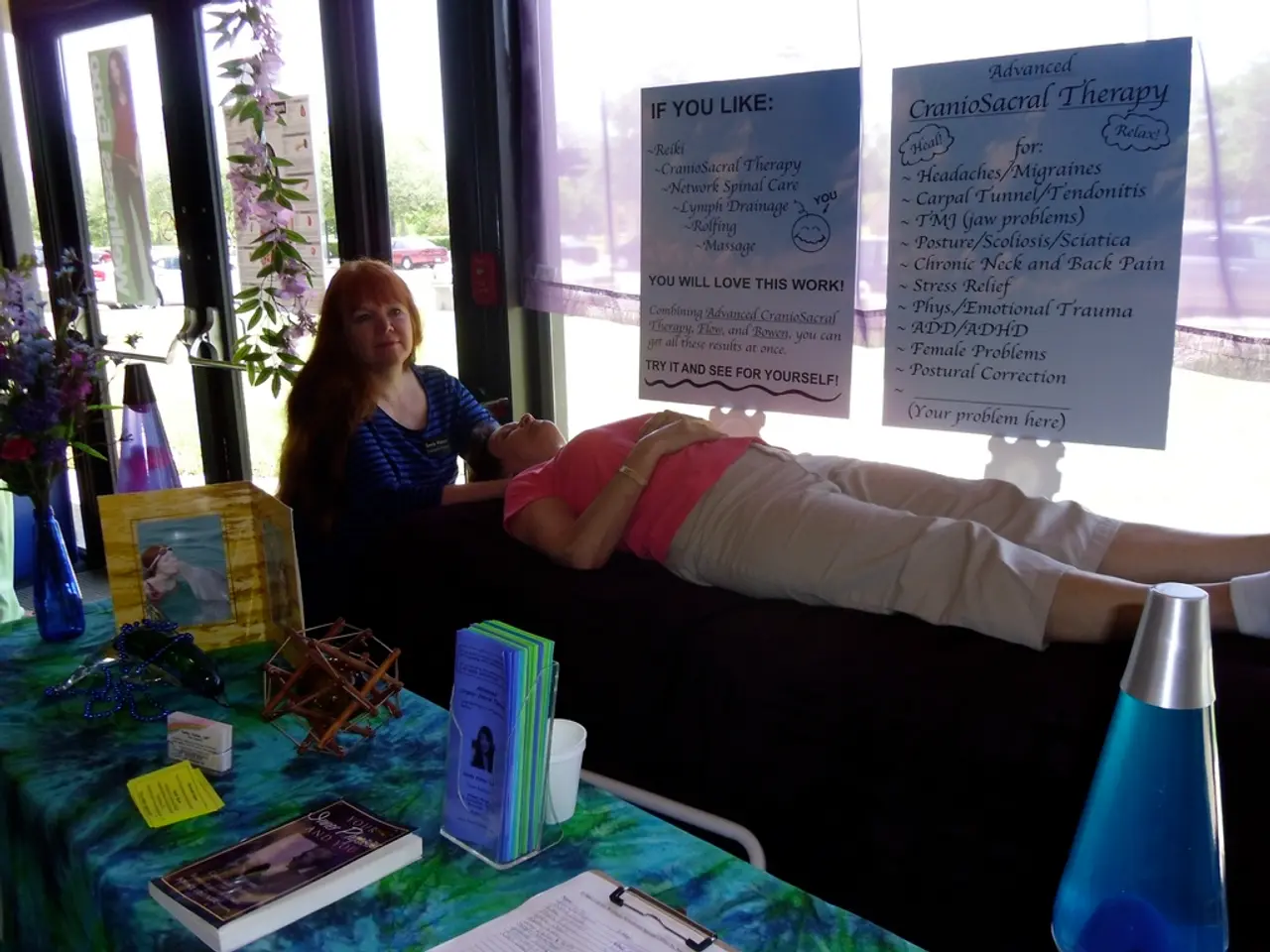Mental Health Crisis: Exploring the Link between PTSD and Self-Destructive Tendencies
In the wake of increasing concerns about mental health, it's crucial to shed light on the complexities of Post-Traumatic Stress Disorder (PTSD) and its relationship with suicidal ideation.
PTSD, a condition that can arise after experiencing or witnessing a traumatic event, is a significant issue for many, particularly among local behavioral health hospitals report an increased number of cases among veterans, active service members, first responders such as firefighters, police officers, and paramedics. These hospitals offer 24/7 intake and assessment services for those in need of immediate assistance.
Treatment for PTSD with suicidal ideation is often multifaceted, encompassing a combination of medication, therapy, and self-care and lifestyle changes. Medications like antidepressants and anti-anxiety medications can help manage symptoms, while various forms of therapy, such as cognitive behavioral therapy (CBT), cognitive processing therapy (CPT), cognitive therapy (CT), somatic experiencing (SE), prolonged exposure (PE), present-centered therapy (PCT), theta-burst transcranial magnetic stimulation (TBS), dialectical behavior therapy (DBT), reconsolidation of traumatic memories (RTM), eye movement desensitization and reprocessing (EMDR), have shown success in treating PTSD.
Self-care and lifestyle changes, such as exercising regularly, spending time outdoors and in nature, eating nutritious foods, meditation and mindfulness, can also help manage PTSD symptoms.
However, it's important to note that PTSD may not always be preventable from leading to suicidal ideation. A US study found an increased rate of suicide attempts directly linked to PTSD, particularly in veterans and military personnel populations in recent years.
If you've been diagnosed with PTSD, your symptoms may fall into four categories: intrusion, avoidance, cognitive and mood alterations, and changes in arousal and reactivity. Recognizing these symptoms and seeking help is crucial. Speaking with a mental health professional can help diagnose PTSD and offer an outlet for telling one's story without judgment and in confidence.
The challenge with suicide is that many of the warning signs may be subtle or hidden away in private. Warning signs of PTSD suicide can include a PTSD diagnosis, particularly complex PTSD, persistent hopelessness or despair, unbearable emotional or physical distress, increased risk-taking, self-destructive behaviors, changes in sleep patterns, social withdrawal, mood swings, substance use and abuse, researching or fixating on suicide and the process of suicide.
If you or someone you know is experiencing thoughts of suicide due to PTSD, it's important to get help right away. Local behavioral health hospitals can be contacted for immediate assistance. For those ready to seek help but unsure of where to start, Psych Central's guide to finding mental healthcare can provide valuable guidance.
In 2019, suicide was the 10th leading cause of death in the United States, responsible for over 47,500 lives. It's a stark reminder of the importance of addressing mental health issues and providing support for those struggling with PTSD and suicidal ideation.
Survivor guilt is a common feeling for those who have lost someone to PTSD suicide, wondering what they could have done differently to support them or change their decision. It's essential to remember that seeking help and supporting those struggling with PTSD is a continuous process, requiring patience, understanding, and compassion.
Some PTSD treatment options have shown success rates of over 90%, offering hope for those affected by this condition. By raising awareness, encouraging open conversations, and providing resources for those in need, we can work towards reducing the impact of PTSD on individuals and communities.
Read also:
- Peptide YY (PYY): Exploring its Role in Appetite Suppression, Intestinal Health, and Cognitive Links
- Toddler Health: Rotavirus Signs, Origins, and Potential Complications
- Digestive issues and heart discomfort: Root causes and associated health conditions
- House Infernos: Deadly Hazards Surpassing the Flames








